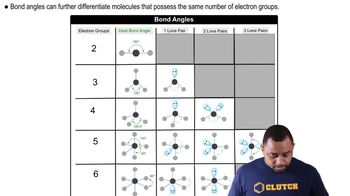Consider the H2+ ion. (c) Write the electron configuration of the ion in terms of its MOs. (d) What is the bond order in H2+?

(e) Which of the following statements about part (d) is correct: (i) The light excites an electron from a bonding orbital to an antibonding orbital, (ii) The light excites an electron from an antibonding orbital to a bonding orbital, or (iii) In the excited state there are more bonding electrons than antibonding electrons?
 Verified step by step guidance
Verified step by step guidanceKey Concepts
Molecular Orbitals

Electronic Transitions

Bonding vs. Antibonding Electrons

Consider the H2+ ion. (e) Suppose that the ion is excited by light so that an electron moves from a lower-energy to a higher-energy MO. Would you expect the excited-state H2+ ion to be stable or to fall apart?
Consider the H2+ ion. (f) Which of the following statements about part (e) is correct: (i) The light excites an electron from a bonding orbital to an antibonding orbital, (ii) The light excites an electron from an antibonding orbital to a bonding orbital, or (iii) In the excited state there are more bonding electrons than antibonding electrons?
(c) Calculate the bond order in H2-.
Draw a picture that shows all three 2p orbitals on one atom and all three 2p orbitals on another atom. (a) Imagine the atoms coming close together to bond. How many σ bonds can the two sets of 2p orbitals make with each other?
Draw a picture that shows all three 2p orbitals on one atom and all three 2p orbitals on another atom. (b) How many p bonds can the two sets of 2p orbitals make with each other?
